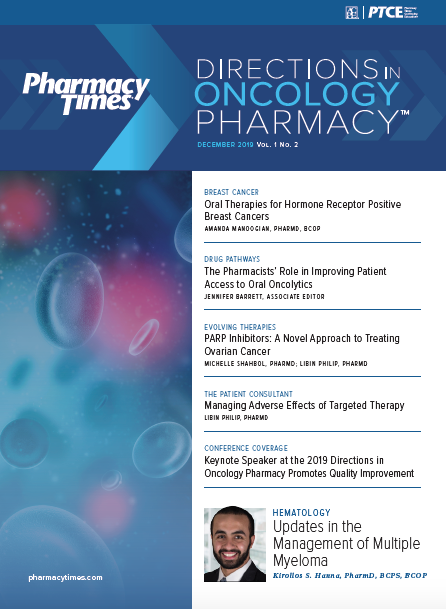Publication
Article
Making Progress on the Global Threat of Hepatocellular Carcinoma: A Growing Armamentarium
Author(s):
This topic was presented by Jolynn K. Sessions, PharmD, BCOP, at the 2019 Directions in Oncology Pharmacy™ conference.
Considered a worldwide epidemic, hepatocellular carcinoma (HCC) is the fifth leading cause of cancer diagnosis and third leading cause of cancer-related death globally. In the United States, approximately 42,000 Americans receive a diagnosis of this deadly cancer annually and approximately 32,000 die. Its incidence has tripled since 1980, and researchers documented a 3% increase in HCC between 2006 and 2015. This topic was presented by Jolynn K. Sessions, PharmD, BCOP, at the 2019 Directions in Oncology Pharmacy™ conference. Dr Sessions is an oncology clinical pharmacist specialist and oncology pharmacy manager at the Charles George VA Medical Center in Asheville, North Carolina.
Many audience members were aware of risk factors (hepatitis B, hepatitis C, alcohol consumption, nonalcoholic steatohepatitis, and aflatoxin exposure) and this cancer’s pathophysiology. Dr Sessions presented a concise treatment overview using a flowchart, separating patients by those who are potentially curable and those who probably will not be cured by current therapy. She also presented a timeline of FDA with sorafenib and have drastically expanded in the past 2 years, emphasizing that there has been significant progress made in both the number and type of available agents.
She went on to emphasize the novel targeted therapies that have proven efficacy in HCC, including agents targeting vascular endothelial growth factor (VEGF) and the programmed cell death protein 1 (PD-1) inhibitors. She reviewed the evidence behind first-line agents, sorafenib and lenvatinib, administration pearls for their use, and also emphasized monitoring considerations. For example, patients being treated with any of the VEGF inhibitors should avoid strong CYP3A4 inducers, and the oncology team should recommend holding administration of these agents if a patient needs a major surgical procedure. She also presented a list of conditions under which these agents need to be temporarily or permanently discontinued (cardiac ischemia, myocardial infarction, hemorrhage, persistent hypertension, gastrointestinal perforation, QTC prolongation, drug-induced liver injury).
Next, using a case-based presentation, she discussed second-line options for patients with advanced HCC. These options consist of oral and infusion therapies. In the former category are regorafenib, cabozantinib, and sorafenib (if the patient received lenvatinib as first-line treatment). In the latter category are the VEGF inhibitor ramucirumab and the PD-1 inhibitors nivolumab and pembrolizumab.
Here, too, she described the evidence behind each of these agents, and talked about some unique concerns. She shared specific considerations for selection of second-line options. For example, patients who are taking regorafenib need to consume low-fat meals, and she explained that this means that the meal needs to have fewer than 600 calories and less than 30% fat. She also stressed that the PD-1 inhibitors should not be used in patients who have had a liver transplant.
Dr Sessions provided an education checklist that walked audience participants through significant items that need to be covered. In addition to the drug-specific items and adherence and persistence planning that all pharmacists educate patients about, patients with cancer need to understand how to dispose of their medication, what their monitoring plan is, and have contact numbers so they can reach an oncology clinician at all times. She shared specific details on how to help patients receiving VEGF inhibitors manage hand-foot skin reaction, diarrhea, and hypertension.
Dr Sessions summed up the presentation by indicating that pharmacists who use systematic approaches can provide effective education and monitoring that improve medication adherence, effectiveness, and tolerance.







